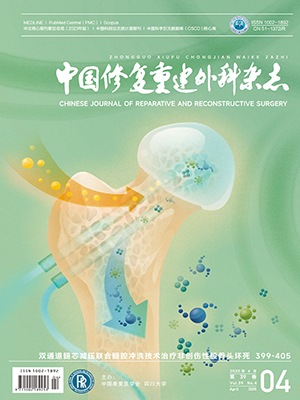Objective To review the research progress of the risk factors for slip progression and the pathogenesis of lumbosacral spondylolisthesis, and to discuss the value of Spinal Deformity Study Group (SDSG) classification system for lumbosacral spondylolisthesis. Methods Recent articles about the risk factors for slip progression and the pathogenesis of lumbosacral spondylolisthesis were reviewed and comprehensively analyzed with SDSG classification system of lumbosacral spondylolisthesis. Results Pelvic incidence (PI) is the key pathogenic factor of lumbosacral spondylolisthesis. The Meyerding grade of slip, PI, sacro-pelvic balance, and spino-pelvic balance not only are the fundamental risk factors of slip progression, but also are the key factors to determine how to treat and influence the prognosis. Therefore, compared with Wiltse, Marchetti-Bartolozzi, and Mac-Thiong-Labelle classification systems of lumbosacral spondylolisthesis, SDSG classification based on these factors mentioned above, has better homogeneity between the subjects of subgroup, and better reliability, moreover, could better guide operative plan and judge the prognosis. Conclusion It is suggested that the SDSG classification system should be the standard classification for lumbosacral spondylolisthesis for the clinical and research work.
Citation: GONG Quan,KONG Qingquan.. BIOMECHANICAL ANALYSIS AND CLASSIFICATION OF LUMBOSACRAL SPONDYLOLISTHESIS. Chinese Journal of Reparative and Reconstructive Surgery, 2013, 27(9): 1134-1137. doi: 10.7507/1002-1892.20130247 Copy
Copyright © the editorial department of Chinese Journal of Reparative and Reconstructive Surgery of West China Medical Publisher. All rights reserved
-
Previous Article
EFFECTS OF MECHANICAL STIMULATION ON EXPRESSION OF AUTOANTIGENS IN MYOBLASTS CHENRong, LIU Xinghui, HUANG Weiyi, ZENG Huijun, SHI Dandan, CAO Biao, LIAO Hua. -
Next Article
RECENT PROGRESS OF SMALL INTESTINAL SUBMUCOSA IN APPLICATION RESEARCH OF TISSUE REPAIR AND RECONSTRUCTION YANGKai, ZHANG Yumin, ZHANG Naili, XU Weijun, LI Baoxing.




